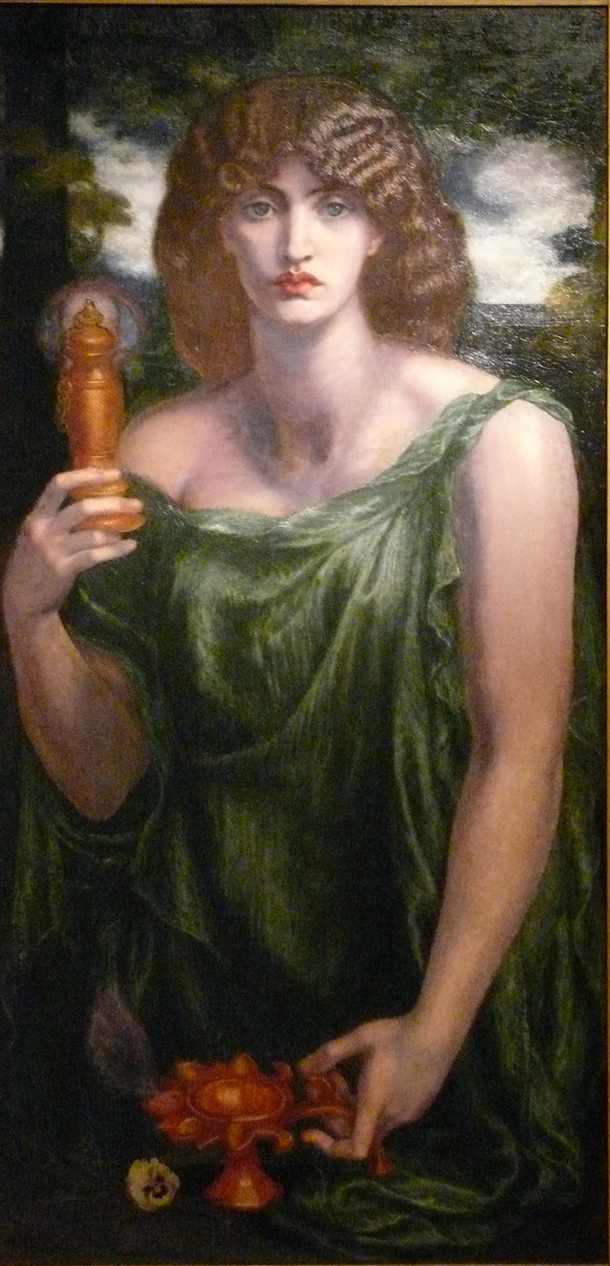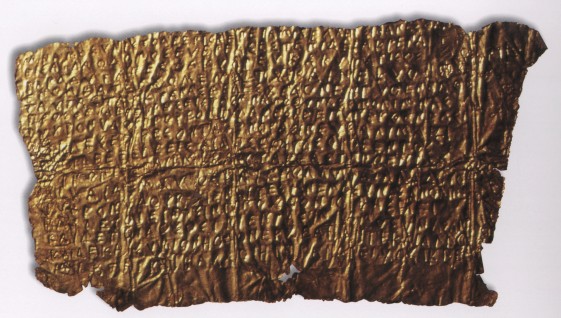
?????????? ???? ????? ???? ?? ???????? ????????
??? ????? ????? ??????? ??? ??? ?(?)??? ????? ????
??? ? ????? ??????? ????? ??????????
???? ???????????? ????? ?????? ???????? ?? ?
?????? ??? ?????? ???? ?????? ??????? ??????
??????? ?? h???????? ??? ?????????? ??? ??????
?????? ???? ??????? ??????? ?? ????????? ????
???? ?? ?? ?????????? ?? ????? ????????????
??? ?? ????????? ????? ?????? ??????????
????? ??? ??? ??? ??? ????? ???????????
????? ? ?? ???? ??? ????????? ??? ??? ???[?]
?????? ???? ?vac?????? ??? ?????????? ??? ???????
??? ?? ??? ???????? ??????????? ???????
??? ?? ??? ?????? ???? ??? ?????????? ??? ??????
??? ?? ??? ?? ????? h???? ????? h?? ?? ??? ?????
?????? ??? ?????? h????? ???????? ??????? ??
This is sacred to Memory: when you are about to die, you will find yourself at the House of Hades; on the right there is a spring, by which stands a white cypress. Descending there, the souls of the dead seek refreshment. Do not even approach this spring; beyond you will find from the Pool of Memory cool water flowing; there are guards before it, who will ask you with cool penetration, what you seek from the shades of murky Hades. Say: “I am a son of earth and star-filled Heaven, I am dry with thirst and dying; but give me swiftly cool water flowing from the Pool of Memory.” And they will take pity on you by the will of the Queen of the Underworld, and they will give you water to drink from the Pool of Memory; and moreover, you will go on the great Sacred Way along with the other famed initiates and baccants make their way.
–Text on a Gold Foil found in Hipponion (ca. 400 BCE)

In the early years of the last century, archaeologists sifting through the ruins of the ancient Greek city of Hipponion (located in the modern Italian province of Calabria, then in Magna Graecia) came across a remarkable find. Nestled inside of a stone chest they found a two-inch wide piece of gold foil onto which a text had been pressed with a stylus using a form of Greek that could be safely dated (as the foil and chest were) to about 400 BCE. The text has been the subject of a good bit of subsequent scholarship; it has been patiently deciphered and discussed and its purpose has been the subject of a good deal of speculation. In the years that followed, scholars noted that this script was similar to a few similar inscriptions, some on gold foil, other on papyrus, and they noted echoes of this text in classical literature–from the Odyssey to lyric verse to Platonic dialogues. The text, composed in an alliterative hexameter, obviously has a religious context. It can be tied to a Dionysian or Orphic cult which was clearly well established in the Greek world of that time, a cult which had a strong focus on the afterlife and which promised its initiates the path (the “Sacred Way”) to a new and better life after death.
The Greeks of antiquity did not have particularly clear notions of an afterlife, though it figures in a number of religious and philosophical writings. Hades was the realm of the dead, and it certainly was not a happy place–though those who inhabited it apparently had little sense of who they had been in their former lives. An exception existed for a heroic elite who were invited to the Elysian Fields, a bucolic site of soft green fields and groves lit with a purple light.
The Hipponion text and related artifacts appear to be passports into the afterworld, or perhaps more precisely a set of instructions to initiates about what to do after death. A dead person would pass by a certain familiar white cypress tree on the way to Hades, it suggested. He would have a great thirst and would be presented a fateful choice of water to drink. He would drink either of the water of memory (??????????) and find his way to Elysium, or he would drink the waters first offered, those of forgetfulness or oblivion (????) and pass on to Hades. The text is designed to help the initiate find his way to memory, and thus to Elysium. It suggests there are obstacles on the way, including guards, and that specific formulas must be uttered to gain access to the water of memory. All of this can be understood simply in terms of an ancient, now extinguished religious rite, as has been convincingly explored in Hugh Bowden’s new book, Mystery Cults of the Ancient World.
But the literature and philosophical writings of antiquity, particularly passages of Pindar, the lyric poetry of Hesiod and the final pages of Plato’s Republic suggest that these texts were laden with broader meanings. They present us with the image of Mnemosyne, the sacred aspect of memory. But Mnemosyne, whose waters are key to this text, is not precisely memory in a conventional sense–rather it is a special consciousness of prior human experience which guides heroic acts and inspires the vision of poets, endowing their deeds and writing with a special human truth. A life worth living, and a life worthy of reward with an afterlife, is one that requires the inspiration of memory, and also constant examination and reconsideration of prior acts. A hero lives for the present, but he remains keenly aware of the past and exercises critical judgment about it. That was the essential path to the Elysian Fields. The alternative was oblivion, forgetfulness and failure, the fate of those who lead lives unexamined, paying no heed to their own past.
Listen to a performance of the opening chorus of Philip Glass’s Koyaanisqatsi (1982), based on the Hopi word meaning “life out of balance”:


